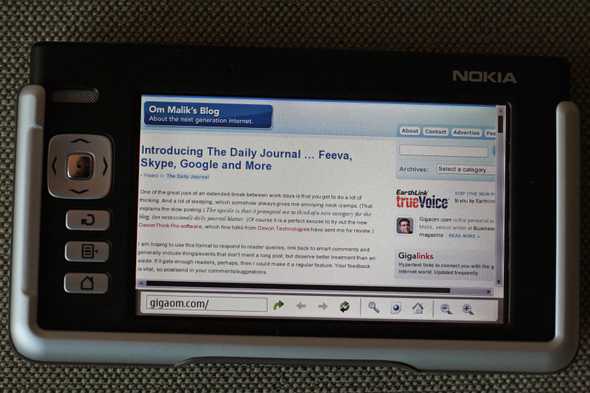Why I hated the BlackBerry (or, "how to avoid a local maximum")
Recently I was talking to someone about early phones, and in passing I said that I never had a BlackBerry because I just didn’t like them. Few shared my opinion at the time. The “crackberry” was the most popular pre-iPhone “smartphone”, beloved by it’s owners and coveted by everyone else.
It wasn’t that I didn’t like the idea of a powerful internet-connected mobile device. I did! It’s just that they got it wrong.
I admit they got it right for their market at the time, the first group that was willing to pay real money for mobile messaging (lawyers keeping up with corporate email on their lunch break). But it was the wrong direction because they found a local maximum instead of the future of computing.
It wasn’t a “native” Internet device. Not just because it didn’t have a decent web browser. That was a symptom, but the root cause was that it wasn’t built for the open Internet.
It was a closed device in every way, and I don’t just mean that it didn’t suit my idealistic hacker perspective. Being 100% proprietary was a real problem because it doomed the BlackBerry to fall behind. Even back then it wasn’t practical to build a good web browser from scratch. The web was too messy and moving too quickly.
That’s why Apple used the open-source KHTML rendering engine (which became WebKit) for Safari. It would have been a huge project to build a browser with good enough compatibility at the time, let alone keep up with the fast-evolving web standards (it was truly a race then). There were only 4 browsers keeping up: Mozilla, IE, Safari, and (sort of) Opera.
And that’s just the browser. The same problem applied to the OS, which wasn’t Linux or BSD-based, lacking developer tools and support.
Obviously the iPhone got most of that right (enough) and the rest is history, even if the “crackberry” fans and Steve Ballmer took a while to get it. (It was “not a very good email machine”.)
But it wasn’t just a contrarian genius idea from Steve Jobs’ mind. The path to the iPhone was already being laid and it was easy to see.
In 2005 I had this wonderful/terrible device, the Nokia 770 Internet Tablet:
 Photo credit
Photo credit
Now that was what an Internet-connected mobile device should be:
- Linux-based and open-source
- Shipped with a decent-ish browser (Opera, which even had Flash support!)
- Large high-res touch screen
- Software keyboard (allowing for that large screen!)
- Let’s pretend it didn’t have a pen, I threw mine out 🙈
The touch screen was poor (no multi-touch), it was generally buggy… and sorry but no cellular data! Only WiFi!
But those were things that could be easily fixed.
A poorly-implemented but correctly-aimed product can iterate it’s way to success much more easily than a polished product that’s aimed in the wrong direction.
A true Internet device was the direction to aim for.
The Blackberry found it’s local maxima, but Steve Jobs iterated upon the ideas in the Nokia 770 Internet Tablet, eventually getting it right. And he did it by sticking to a vision even though that involved a lot of risk and solving hard problems like making a good virtual keyboard. And then continuing to iterate on a product that was initially much too limited (iOS didn’t even have cut & paste!). But the vision was right, it was aimed in the right direction.
This is why I have an iPhone 3G and an iPhone 4 framed on my office wall.
(BTW the Blackberry film is excellent.)